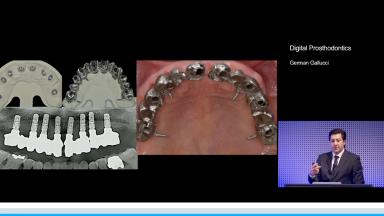
Characteristics of Recent Prosthetic Materials
Congress Lecture
Prosthodontic Planning and Procedures
Digital protocols have an increasing influence on prosthodontic treatment concepts. These protocols use an intraoral scan instead of a conventional impression followed by virtual design and production, without the need of an actual master cast. The resulting monolithic implant crowns connected to prefabricated titanium abutments can be considered a viable substitute to conventional manufacturing techniques for posterior implant restorations. This lecture differentiates between subtractive methods, such as milling or laser ablation, and additive processing, such as three-dimensional printing and selective laser melting. All these technologies have the capacity to improve overall treatment quality, making it more reproducible and predictable. The correct indication and application of the digital dental workflow in daily routine is the prerequisite for the success of such implant-borne reconstructions. Major benefits of the digitization process constitute reduced production costs, improvement in patients’ satisfaction due to significantly reduced chair time as well as clear patient preference for digital impressions.

At the end of this Congress Lecture you should be able to…
Download the QR code with a link to this page and use it in your presentations or share it on social media.
Download QR code